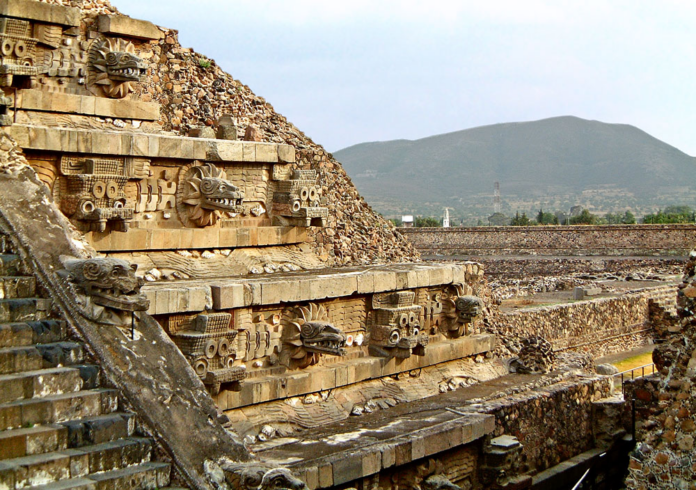A Monument to Time and Creation
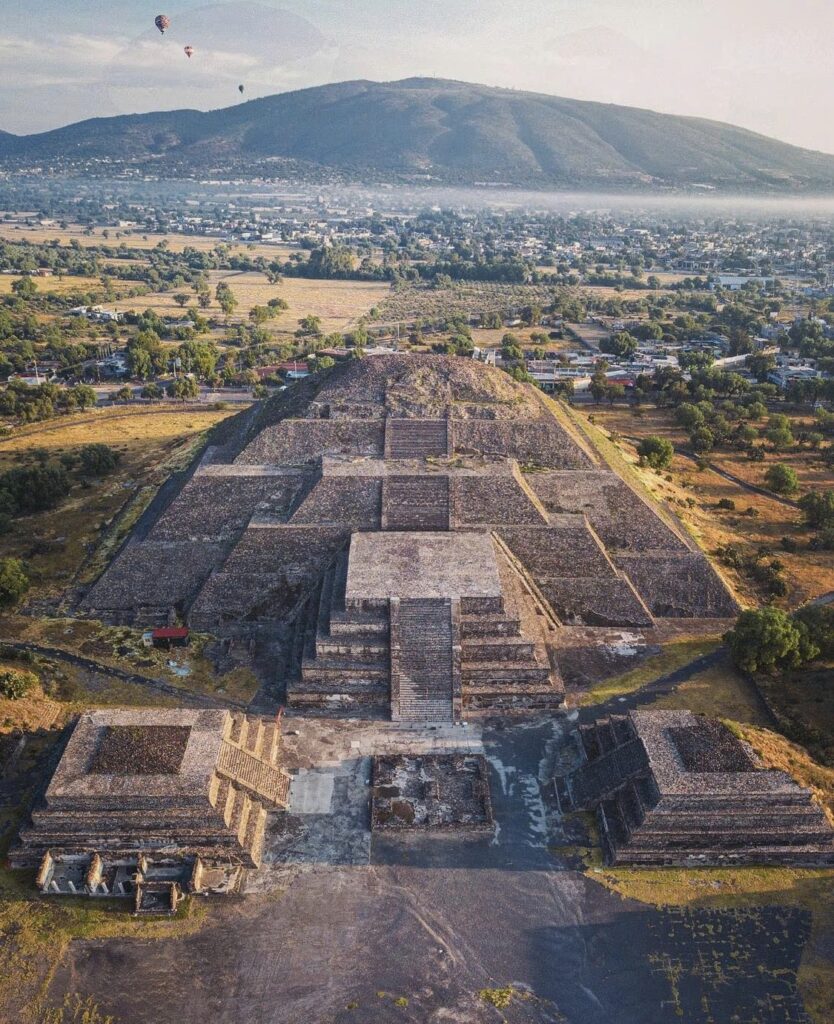
In the heart of ancient Teotihuacan stands a remarkable structure that has captivated archaeologists and history enthusiasts for generations. The Temple of the Feathered Serpent, also known as the Pyramid of Quetzalcoatl, is not just an architectural marvel but a cosmic clock that tells the story of creation and the passage of time.
The Serpent’s Tale
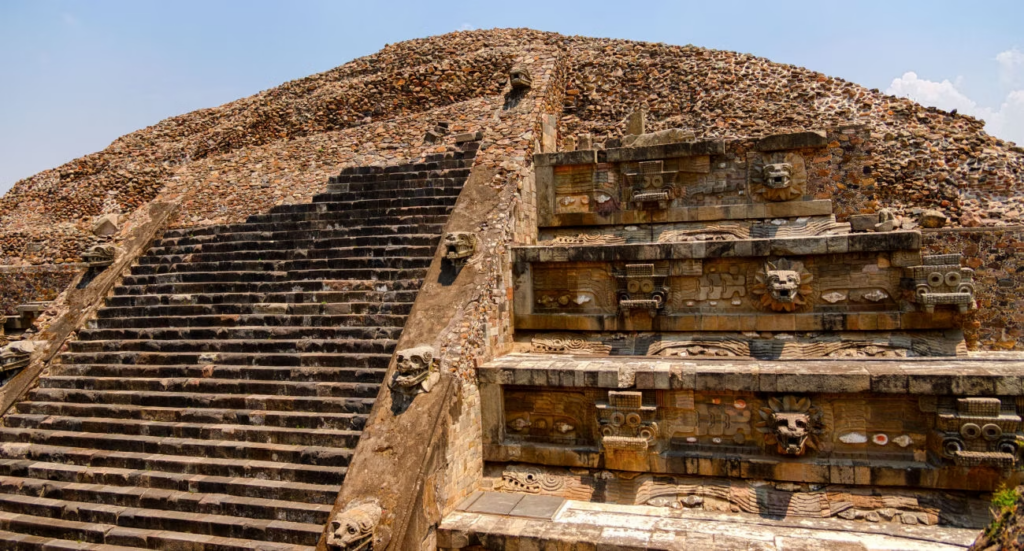
As you approach the eastern side of the temple, you’re immediately struck by the intricately carved heads adorning its facade. These stone sentinels, crafted in the 3rd century, alternate between the feathered serpent Quetzalcoatl and a mysterious crocodilian deity. Between them, bas-relief carvings depict undulating serpent bodies, complete with rattlesnake details.
Decoding Ancient Symbolism

The Teotihuacano people left no written records as we know them. Instead, their art served as a complex language, weaving together pictographs and ideograms to convey profound ideas about their world and beliefs.
Quetzalcoatl: The Feathered Serpent
The feathered serpent heads are rich with symbolism. The feathers represent both the petals of flowering crops and rays of sunlight, linking Quetzalcoatl to harvests and celestial power. A curling eyebrow speaks of duality, infinity, and the swirling cosmos.
The Crocodilian Mystery
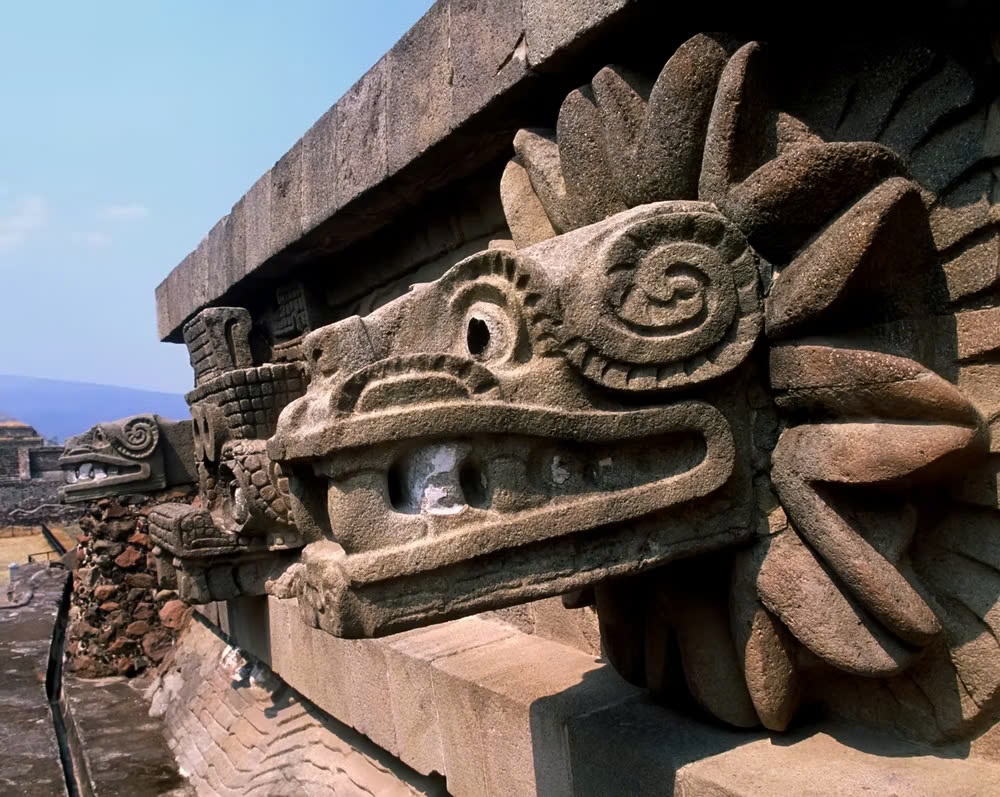
The crocodile-like heads have sparked debate among scholars. Some see them as Cipactli, a primordial crocodile from Aztec legend. Others interpret the protruding snout as Xiuhcoatl, the Fire Serpent who guided the sun across the sky.
A Cosmic Shrine Beneath
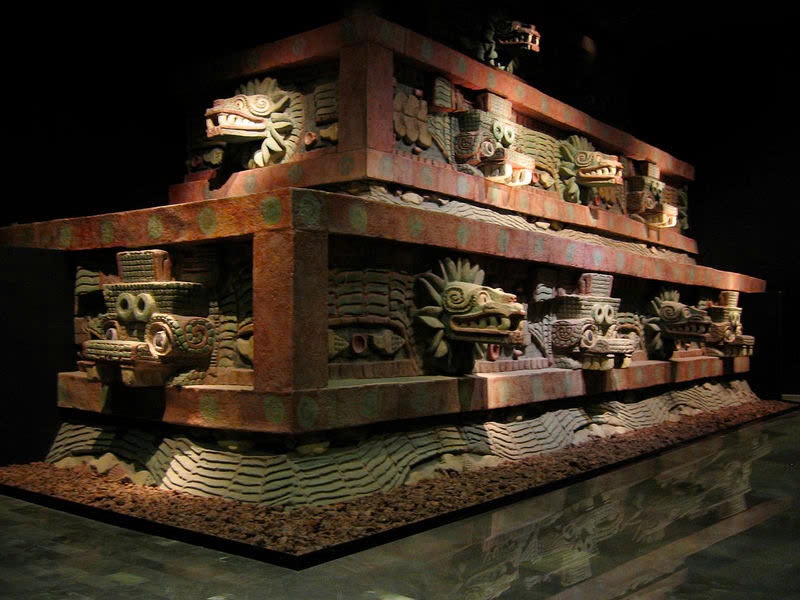
Venture beneath the pyramid, and you’ll find a tunnel that seems to transport you through the cosmos itself. Hundreds of clay spheres, glittering with pyrite, line the walls, creating a starry passage to three sacred caves. This underground complex may have served as a shrine to creation, possibly even used for royal births to symbolize divine lineage.
The Great Clock of Teotihuacan
Counting the Days
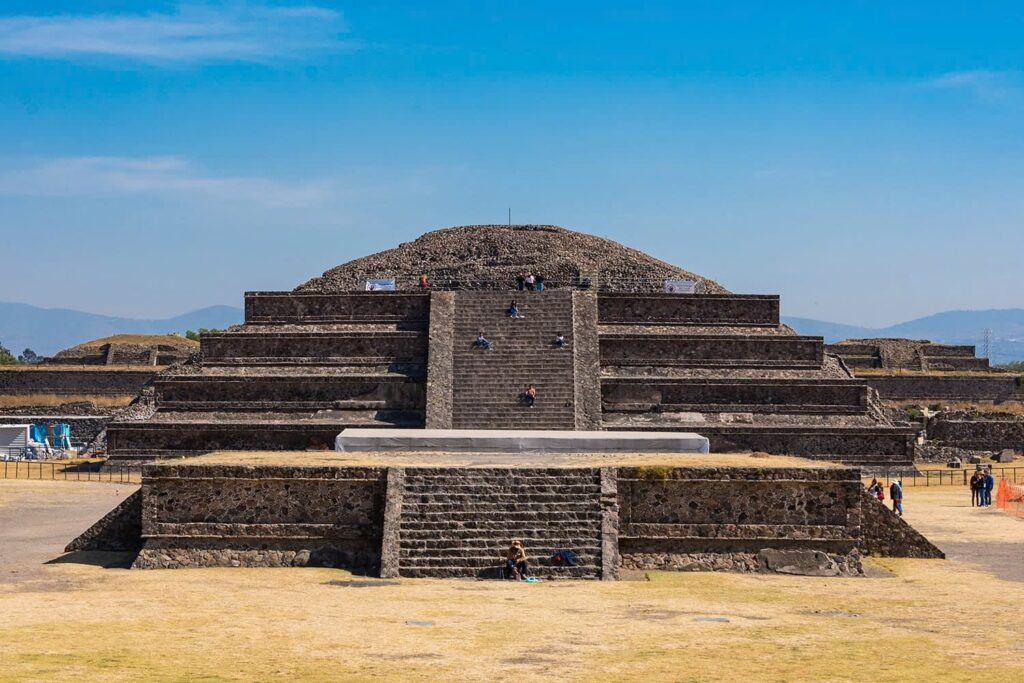
The temple’s design is intrinsically linked to the sacred calendar. It’s estimated that the four faces of the pyramid once displayed 260 serpent heads – one for each day of the ritual year. A small gap between the carved teeth may have served as a place for offerings or to mark the current day for all to see.
The Ciudadela: A Vast Ceremonial Space
The Temple of the Feathered Serpent sits within the Ciudadela, an enormous complex that could hold the entire population of Teotihuacan. With 13 structures representing the 13-day “weeks” of the calendar, this space was designed for grand ceremonies that marked the passage of time and honored the gods.
A Legacy Written in Stone

The Temple of the Feathered Serpent stands as a testament to the ingenuity and cosmic understanding of the ancient Teotihuacanos. It’s more than just a pyramid – it’s a monumental clock, a creation story, and a window into a civilization that saw time and space as deeply interconnected. As archaeologists continue to unravel its secrets, the temple remains a source of wonder and a bridge to our ancient past.
